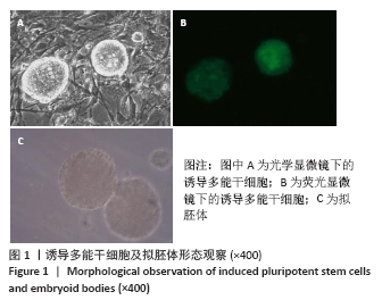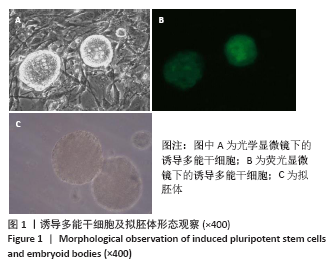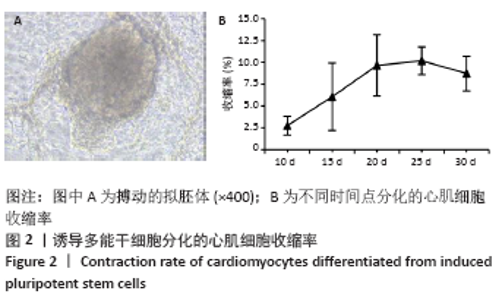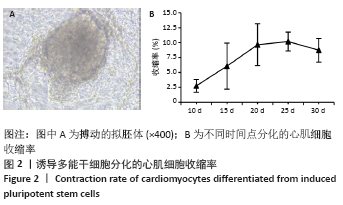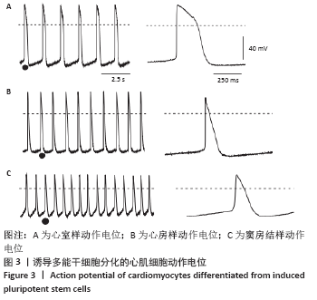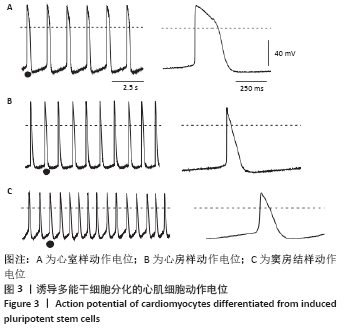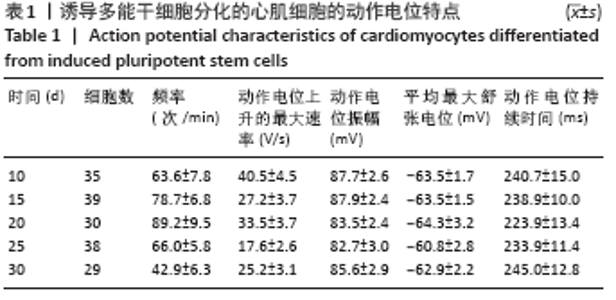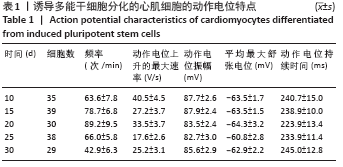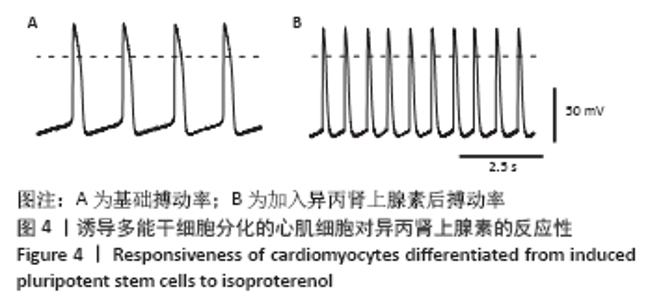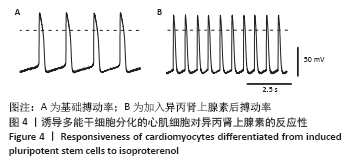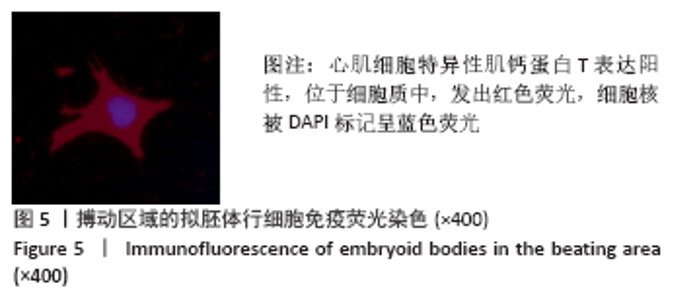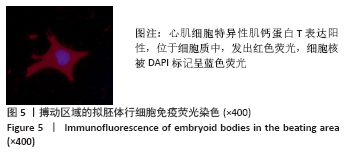[1] MAKINO S, FUKUDA K, MIYOSHI S, et al. Cardiomyocytes can be generated from marrow stromal cells in vitro. J Clin Invest. 1999;103(5): 697-705.
[2] SINGH AM, LI FQ, HAMAZAKI T, et al. Chibby, an antagonist of the Wnt/beta-catenin pathway, facilitates cardiomyocyte differentiation of murine embryonic stem cells. Circulation. 2007;115(5):617-626.
[3] TAKAHASHI K, YAMANAKA S. Induction of pluripotent stem cells from mouse embryonic and adult fibroblast cultures by defined factors. Cell. 2006;126(4):663-676.
[4] ZHANG J, WILSON GF, SOERENS AG, et al. Functional cardiomyocytes derived from human induced pluripotent stem cells. Circ Res. 2009; 104(4):e30-41.
[5] FUJIWARA M, YAN P, OTSUJI TG, et al. Induction and enhancement of cardiac cell differentiation from mouse and human induced pluripotent stem cells with cyclosporin-A. PLoS One. 2011;6(2):e16734.
[6] 熊挺淋,张丽莎,刘涛,等.小鼠诱导多能干细胞体外分化为心肌细胞的实验研究[J].中国细胞生物学学报,2013,34(6):810-815.
[7] 胡三强,王妍妍,马永宾,等.小鼠胚胎成纤维细胞的分离培养及饲养层制备[J].中国组织工程研究,2014,18(45):7306-7311.
[8] YANG L, SOONPAA MH, ADLER ED, et al. Human cardiovascular progenitor cells develop from a KDR+ embryonic-stem-cell-derived population. Nature. 2008;453(7194):524-528.
[9] LAFLAMME MA, CHEN KY, NAUMOVA AV, et al. Cardiomyocytes derived from human embryonic stem cells in pro-survival factors enhance function of infarcted rat hearts. Nat Biotechnol. 2007;25(9):1015-1024.
[10] NARAZAKI G, UOSAKI H, TERANISHI M, et al. Directed and systematic differentiation of cardiovascular cells from mouse induced pluripotent stem cells. Circulation. 2008;118(5):498-506.
[11] YAO S, CHEN S, CLARK J, et al. Long-term self-renewal and directed differentiation of human embryonic stem cells in chemically defined conditions. Proc Natl Acad Sci U S A. 2006;103(18):6907-6912.
[12] TADA T. Toti-/pluripotential stem cells and epigenetic modifications. Neurodegener Dis. 2006;3(1-2):32-37.
[13] JONSSON MK, DUKER G, TROPP C, et al. Quantified proarrhythmic potential of selected human embryonic stem cell-derived cardiomyocytes. Stem Cell Res. 2010;4(3):189-200.
[14] MA J, GUO L, FIENE SJ, et al. High purity human-induced pluripotent stem cell-derived cardiomyocytes: electrophysiological properties of action potentials and ionic currents. Am J Physiol Heart Circ Physiol. 2011;301(5):H2006-2017.
[15] PRAJAPATI C, OJALA M, LAPPI H, et al. Electrophysiological evaluation of human induced pluripotent stem cell-derived cardiomyocytes obtained by different methods. Stem Cell Res. 2021;51:102176.
[16] KIM JJ, YANG L, LIN B, et al. Mechanism of automaticity in cardiomyocytes derived from human induced pluripotent stem cells. J Mol Cell Cardiol. 2015;81:81-93.
[17] SANCHEZ C, BUENO-OROVIO A, WETTWER E, et al. Inter-subject variability in human atrial action potential in sinus rhythm versus chronic atrial fibrillation. PLoS One. 2014;9(8):e105897.
[18] PACI M, HYTTINEN J, RODRIGUEZ B, et al. Human induced pluripotent stem cell-derived versus adult cardiomyocytes: an in silico electrophysiological study on effects of ionic current block. Br J Pharmacol. 2015;172(21):5147-5160.
[19] DU DT, HELLEN N, KANE C, et al. Action potential morphology of human induced pluripotent stem cell-derived cardiomyocytes does not predict cardiac chamber specificity and is dependent on cell density. Biophys J. 2015;108(1):1-4. |
